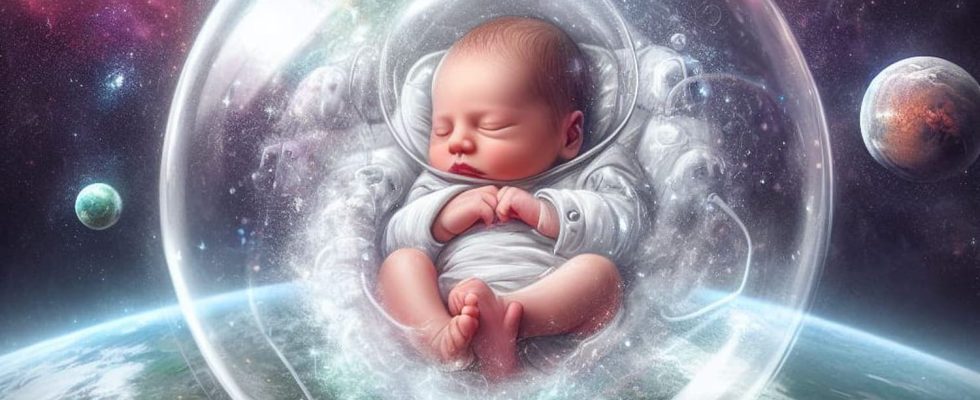For the first time, mouse embryos have developed on the International Space Station (ISS). According to Japanese researchers, this discovery suggests that humanity could reproduce in space. But what would a weightless birth look like?
Could we one day reproduce in space? This is the question that scientists have been trying to resolve for many years. To provide part of the answer, Japanese researchers cultivated frozen mouse embryos aboard the ISS in August 2021. And for the first time, the astronauts managed to make them develop normally for four days. “Embryos cultured in microgravity conditions developed normally into blastocysts.” (cells that develop into a fetus and placenta), the researchers explained in the iScience magazine published on October 27, 2023. They specify that “gravity had no significant effect” in particular on the DNA and genes of the mice.
This study represents a major advance “showing that mammals might be able to thrive in space”, Yamanashi University and the Riken National Research Institute said in a joint statement. “In the future, it will be necessary to transplant blastocysts grown in microgravity on the ISS into mice to see if the mice can give birth” add the authors of the study.
But what would a weightless birth look like? According to Scott Solomon, professor of biology at Rice University in the United States, “the absence of gravity weakens the bones, which increases the risk of pelvic fracture during childbirth. declared the evolution specialist in an interview given in 2019 to the Business Insider site. According to him, births would require a cesarean section. Additionally, babies’ heads might be larger in space. The latter could also be larger, if we refer to the fact that astronauts grow 3 to 5 centimeters due to the absence of gravity. Finally, regarding skin color, it could be darker, says the specialist.
Remember that as part of the Artemis 2 program, NASA plans to send a crew to the moon at the end of 2024 and during 2025. The long-term objective is to set up manned exploration missions on the moon and then on Mars.
